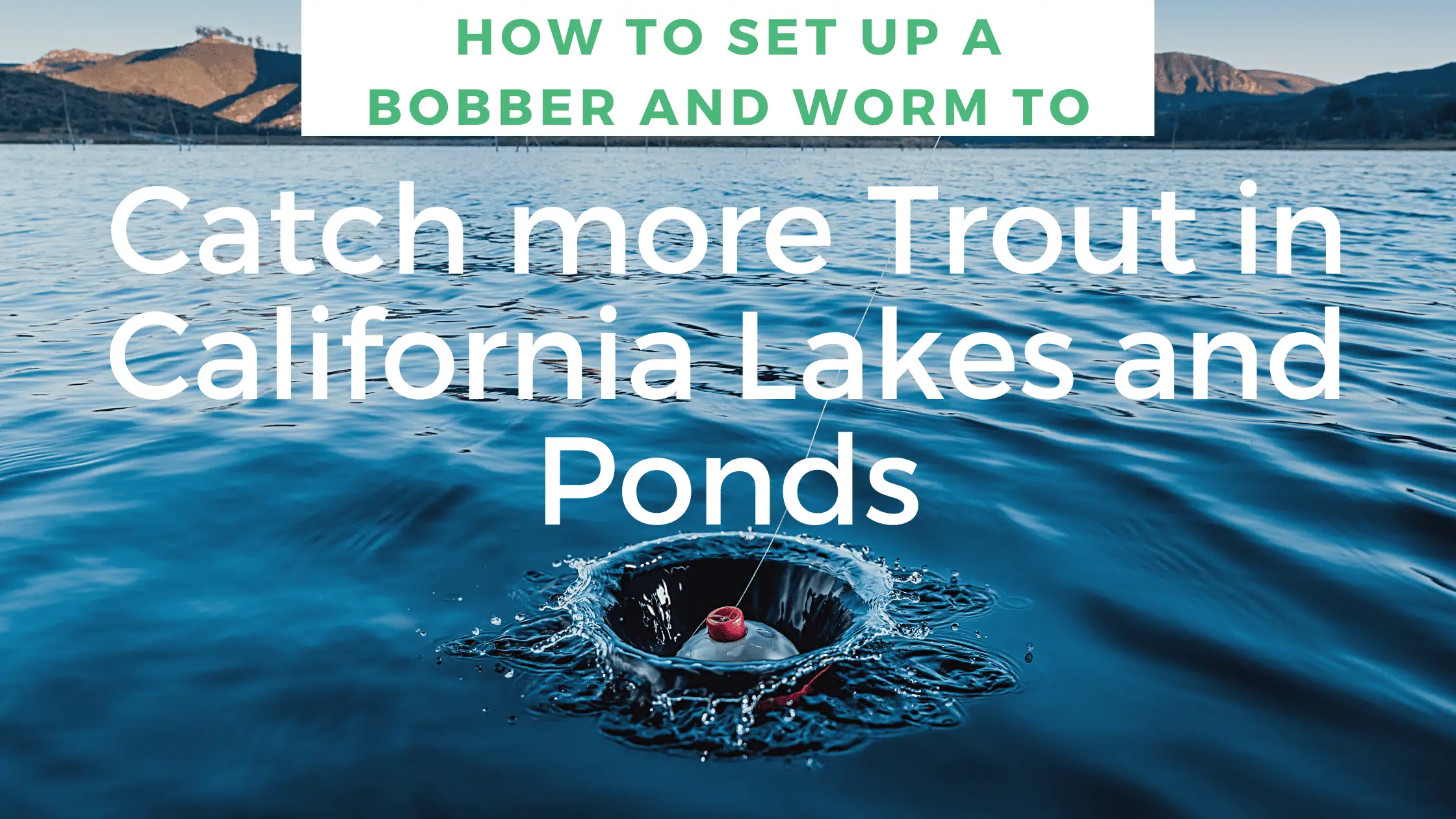The setup
Are you interested in trout fishing in California? Then this will require the right kind of gear for the location you choose. Whether it’s a lake or pond, the set up for trout fishing will include some essential equipment. But keep in mind that you want to have plenty of goodies in your tackle box and at-least 2 reels. But what else would be good to bring with you for setting up a bobber for live worm fishing?
· Equipment you should bring
If you’re going to be on foot you should always bring a backpack to stash your tackle and gear. This way you keep your hands free to carry your rods and other equipment too big to put away. Your fishing hole might be a distance from your car, so figure that you’ll need to travel light as possible. You don’t want to make a second trip back to your car unless you bring a friend to help too.
Always bring your worms that are stored in a container that has fresh soil. This way your bait will be content all day long. Light snacks such as granola bars and drinking water are always recommended. Don’t bring anything that’s too scented since this strong smell may attract unwanted animals like bears. You should always have a portable first-aid kit just in case of bumps or scrapes. If the location is isolated, bring a long-range multi-channel Walkie talkie.
· Select fishing laws you should know beforehand
Do your research on the fishing spot you plan to go to. Make sure you have your set up for trout fishing with a license and permit if needed. There is always the chance there are park rangers that will want to check your creed. Also, make sure you’re not fishing on private land unless you have permission first. Angry landowners in some California locations don’t like having unwanted guests.
The important point is that you should know when fishing is permitted or not. The state does have regulations in specific months when trout fishing in California is allowed. If you get caught fishing off-season, the fines can be pretty hefty. Setting up a bobber and worm for California trout fishing is less problematic is you also have a fishing license.
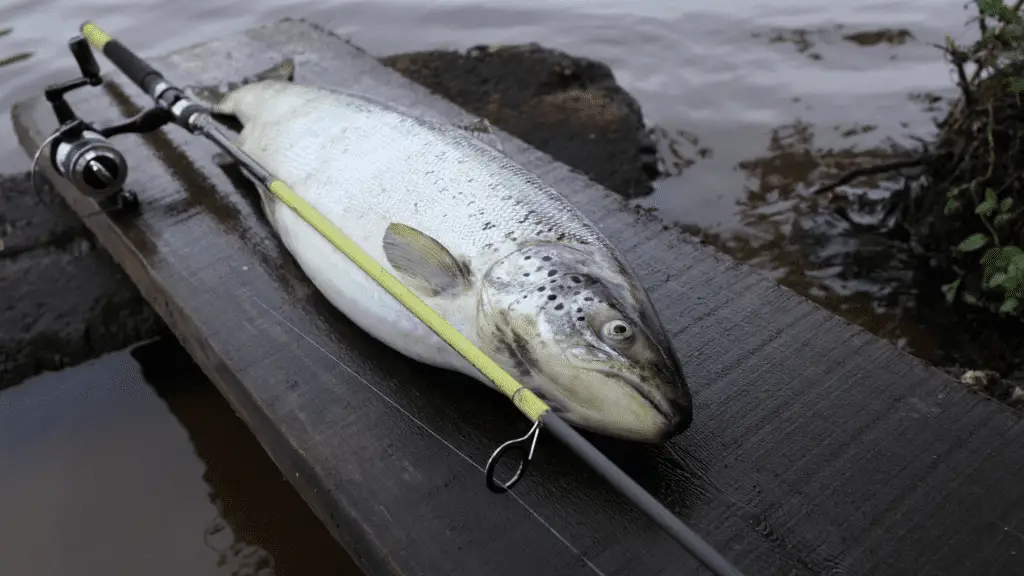
Selecting the right kind of rod
Your rod is going to be very important for catching trout. You should have at a minimum a 4-10lb light rod. At long as it’s comfortable to hold and works well for you, bring a couple to have more fishing potential. What is going to be more important is the reel that fits onto your rod. Depending on what type of trout you intend to fish for, you’ll need to know your trout breed first.
· Spinning reel
In reality, you should have some previous experience when fishing for trout. Since you’ll be fishing with a bobber, casting your line is about the hardest part. But you should have a spinning reel that can hold up to the challenge of pulling them back in. I can recommend that you’ll most likely be happy using a lightweight 1000-2500 reel size. You’re not fishing for anything more than 8 pounds, so naturally, a 3000 reel size is total overkill.
As long as you have a decent reel with good bearings ensures you won’t have too much drag. Naturally, the more bearing on spinning reels, means you have a smoother reel-in for the recovery. This is especially the case for setting up a bobber and worm for California lake trout fishing.
· Your fishing line
You don’t need much test strength if you’re fishing for lake and pond trout. The maximum you want to bring is a 10-pound fluorocarbon. It’s stronger than monofilament and is invisible on your trout fishing line setup that’s underwater. It also has a stronger stretch to it that makes it easier reel in feisty trout. Because it doesn’t refract light as monofilament does, your trout won’t be wary of your line.
The only downside to this type of fishing line is the price. It’s twice as expensive as monofilament, but I can safely say it’s worth it. You can be sure that this line is especially helpful for spinning reel fishing.

Types of bobs
This is a very simple device that gives you a heads-up warning if a trout of fish are giving your bait a nibble. The main job of a bob is to keep your bait suspended at a specific level, that’s all their job is. There are many types of inline bobbers but the easiest is the push button snap bobber. Bring at least a 1″-2″ button bobber to float your line.
· Tying the line onto a bob
The push-button bobber is easier to attach to your line because there’s no need for tying knots. One end has a large red button at the top. Obviously, the button end is sticking out of the water. To attach it to your line, depress the edge of the button top to expose the little brass hook. Wrap your fishing line around the hook twice and release the button edge. Now to attach it to the bottom hook you push the whole button down.
This allows another hook at the bottom to emerge from the rounded end of the bobber. Take your line and wrap it 2 more times onto the hook and then release the top button slowly. Now you have a perfectly straight bobber attached to your mainline. But this may not be enough to keep your bobber nice and steady. Setting up a bobber that’s steadies your worm for trout fishing also needs a split shot.
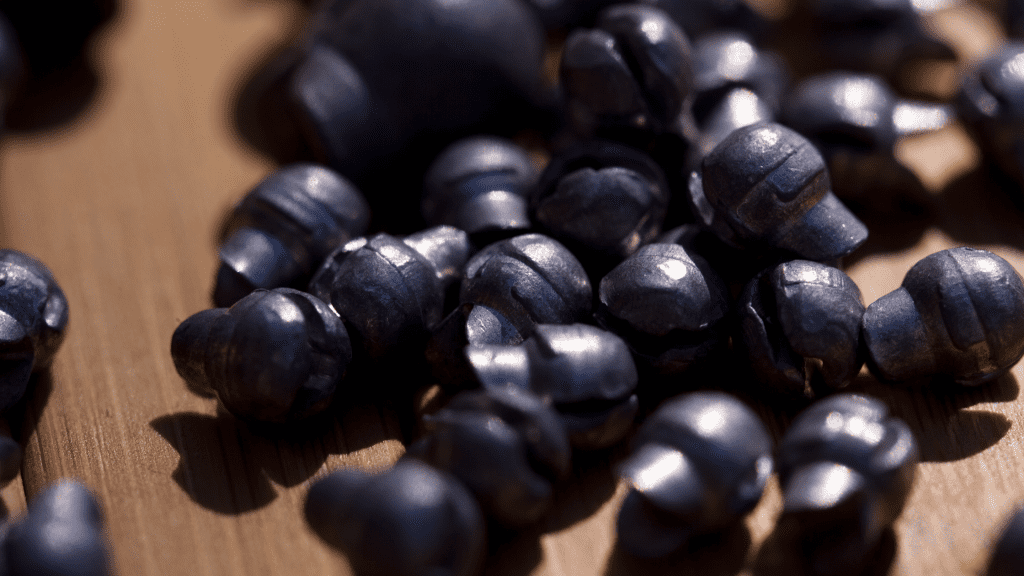
Crimping weights
This is usually called a split shot and is made from a soft lead. Because you have a bobber that allows your line to be suspended, the dynamics of water require balance too. Under the water on the opposite end, you need your line to be more stabilized. This is why you add a little crimping weight to balance your bobber.
· attaching a crimping weight
The size of your lead crimper will have different effects on the stability of your line. You can use anything from your split shot collection (I recommend #2-5) that is placed 18-24 inches below your bobber. Place the split shot around the line and use a pair of players to crimp it onto the line. You should have at least 6-8 inches of the line towards the bottom to attach your hook.
· Types of trout hooks
For lake and pond fishing you need to use a mustache hook. This is the classic type you used that has a sharp barbed end that keeps live bait from slipping off. You should have an assortment of freshwater fish hooks with a range of sizes. Stick with a general hook size between 6-10mm. If the hook is too big, your trout fishing line setup will be too obvious to see by the trout. It should be the worm they see and not the hook.
To attach the hook to the end of your line you’ll need to thread the line through the hook eye. Give yourself at least a couple of inches to work with. Fold the line back towards the mainline. Now the short end of the folded line you’ll make a fisherman’s knot. This is achieved by spinning the short end 7 times around the mainline. After that, you thread the remainder of the short end back through the hook eye. Give it a good pull and it’s done.
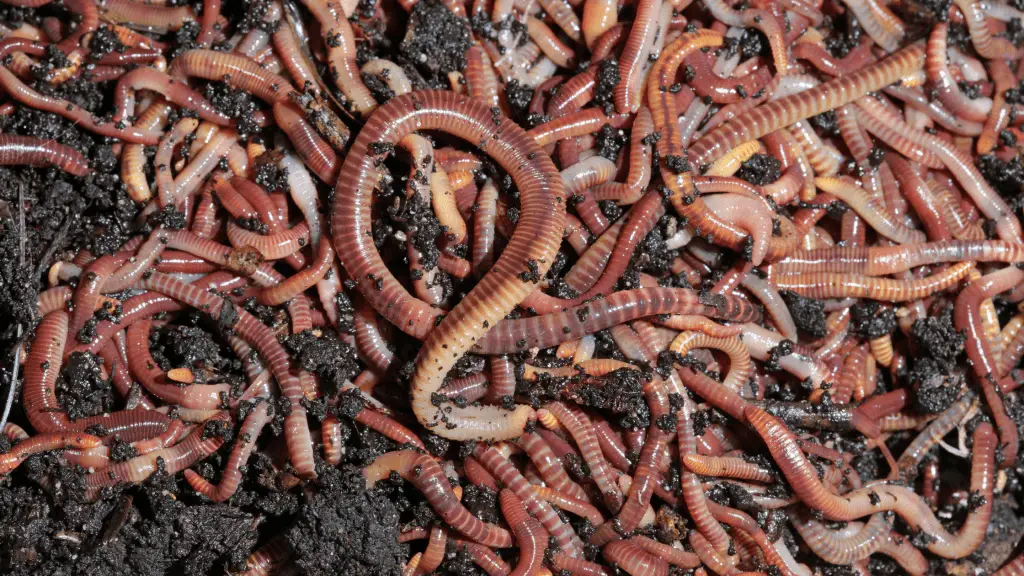
Type of live worm bait
Earthworms are always good for your set up for trout fishing in California, but they should be the bigger darker kind. These are the ones that come to the surface of the soil at night. These are often called Nightcrawlers but not always. A real nightcrawler is a red worm and is also called the Dew Worm. An earthworm tends to be more purplish-red in color, while nightcrawlers look grayish-red. They are both earthworms but come from different levels in the soil.
· Best worms for trout
Trout will like going for the red worm more often than not. They are mostly used for fishbait because they live closer to the surface than nightcrawlers do. You’ll also find that their red color stands out more in terms of visual impact. They are very wiggly in the water than regular compost earthworms likewise. This is why they’ve earned the name red wigglers to most fishermen.
· Attaching a worm to the hook
You don’t need too much worm on a hook to be used as bait. You only need to use ¼ or less to have viable live worm bait. Attach your worm from the end that was originally pinched-off. This should go over the tip of your hook about 1/3 of the way into the worm’s inner body. The rest of the hook is pieced through the side so it won’t slip off the hook after that. Because your hook has a barbed end, it won’t slip off the hook so easily.
This gives enough room for the remaining worm to flail-around and makes for attractive wiggling trout bait. The rest of the worm you pinched-off goes back into your soil container for later use. Setting up a bobber and worm for trout fishing in California may need getting used to if you’re squeamish.
· Stretching your bait supply
It’s not that worms are expensive but you might get a clever trout that manages to take a nibble. Perhaps they got enough of the worm without being hooked and that’s enough to lose your live bait. You’ll need to add more bait to your hook. Only using ¼ of your worm at a time stretches the amount of wiggler bait for a day. It’s also cost-effective if you are fishing over a couple days or more.
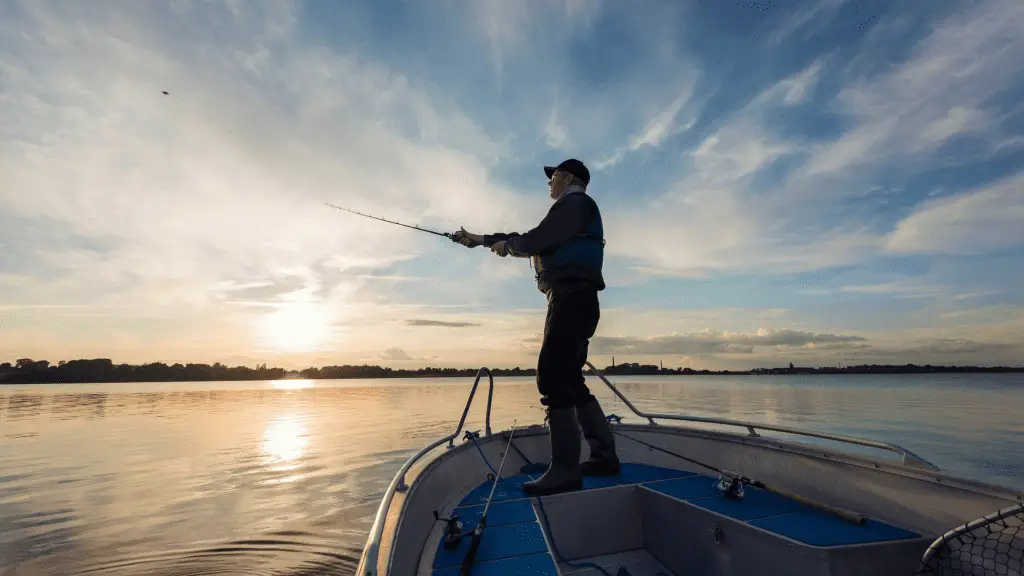
Casting your line
Now that everything is ready to start fishing, you can finally cast your line. You’ll need to select a spot to cast your line. Knowing where trout like to hide is typically near the bottom stones where they’re hiding. This is a good spot to cast in these areas but not exclusively, so it just depends on your gut feeling.
· Special tips for where to cast a line
To catch a trout you need to think a bit like a trout and how they like to hunt. Trout are opportunistic hunters and like to sneak up on their food. They’re also keen to hide from being hunted themselves, so this is why they are extra cautious. What draws them to grab for tasty wiggling bait all depends on your location. Try to keep away from the edge of a lake or pond by 10 feet from the water.
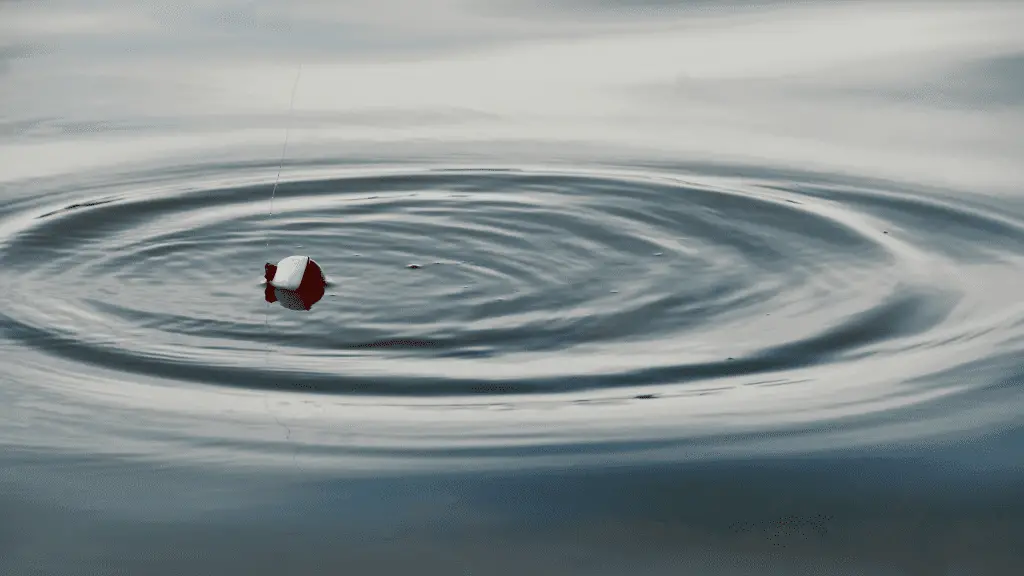
What to do when your bobber starts bobbing
Aside from the amount of waiting after you cast your line, you’ll get some movement from time to time. But what happens when your bobber starts going nuts? It’s more than likely you’ve hooked a trout. This is when you need to act quickly and reel in your prize. Here’s what you’ll need to do. The time it takes in setting up a bobber and worm for California trout fishing finally pays-off at this point.
· Reeling in a trout
Don’t use sudden movements to reel in your trout, but the most important part is to have constant contact. In other words, you shouldn’t let the line go slack, and always feel you have the trout on a leash. Use a steady line pull when you reel in the line slowly towards you. By the time the trout is near the edge of the shore, you’ll need to lift the trout out of the water. This is where you can take the next step to retrieve the trout.
· Use a net or catching by hand
If you’ve brought a fishnet it’s easier to keep the trout from flopping around. But sooner or later you need to take the trout out of the net to remove the hook. If you’ve brought a fishing glove, this will give you a better grip on a slippery trout. To maintain a live catch level for your fish creed, you’ll need to remove the hook. At the end of any set up for trout fishing day, you need to measure your fish.
· How to remove a worm hook properly
The last thing you want to do is remove a hook with your bare hands, getting yourself hooked is painful. Use a pair of needle-nose pliers that can grip the hook and it’s easier to remove. This can be done by squeezing the barb at the end of the hook so the hook slips off easier. You might need to straighten the hook in some cases. Never pull the hook out of your trout fishing line setup that causes more damage to the fish. That’s simply cruel.
· How to store a freshly caught trout
Don’t put freshly caught trout into your creel just yet, since you need to keep them in the water. They can be inside a bag net, but it’s best if they’re near water that is flowing. If it’s a lake, you just need to move the bag around every half hour to give them enough oxygen. When you’re done fishing for the day then you can decide what you want to keep based on creed limits.
· Fish creed limits for trout
California for the most part, allows 5 trout to be kept with a maximum of 10 in possession. These apply to creeks, rivers, streams, lakes, and pond hatcheries. But the official times for the trout season is all year except for some hatcheries. The length can range from 14-18 inches of what can be kept. You can also find more information on the exact rules from the 2020-2021 California Freshwater sport fishing guide.

